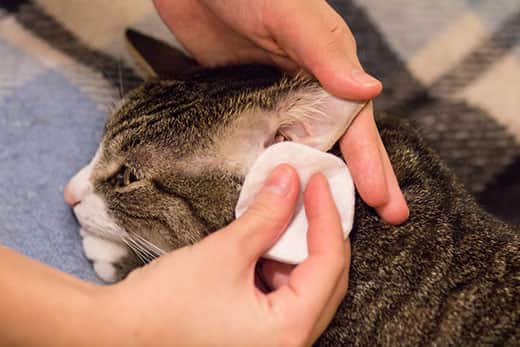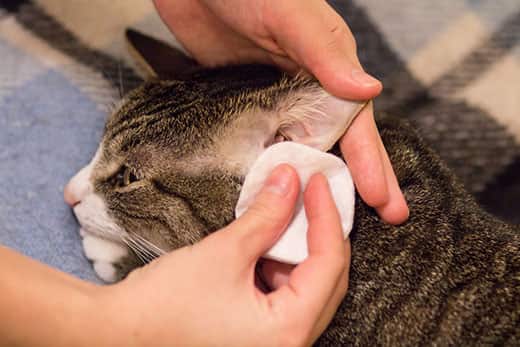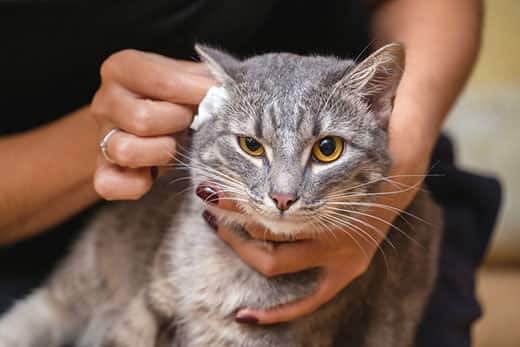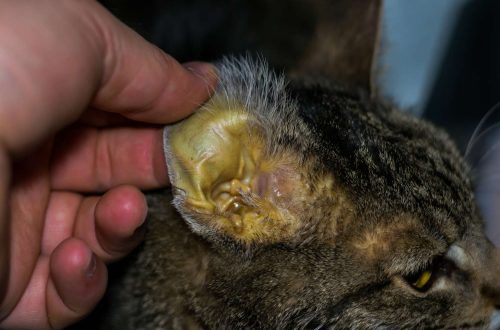
How to clean a cat’s ears: a detailed guide
Cats are very clean animals and take excellent care of themselves. However, there is one place where they cannot reach on their own, and that is their ears. The ability to clean the ears of a pet is an important skill for any owner. Cleaning your cat’s ears at home can help identify any health problems they may have in that area, including wax buildup, ear mites, and infections.
Contents
How to clean a cat’s ears
Before starting the procedure, you need to prepare everything you need. During cleaning, everything should already be at hand.
You will need the following:
- Wadded disks.
- Cleansing fluid specially formulated for cleaning the ears of cats.
- A towel or blanket to wrap the cat in if needed.
The Chicago Animal Medical Center recommends that you consult with your veterinarian before purchasing an ear cleanser. Astringents such as vinegar, alcohol, and hydrogen peroxide can damage a cat’s delicate ears.

How to properly clean your cat’s ears
You need to put the cat on your knees and gently hold it in place. If your pet doesn’t like being held, a towel will come in handy. In this case, gently lift the cat and wrap it tightly in a towel before placing it on your lap. If there is an assistant nearby, he can hold the cat while the owner cleans her ears, or vice versa.
- If the cat is meowing desperately or the question is frozen in her frightened eyes: “What are you doing?”, you need to speak to her in a soft, soothing voice and shower her with caresses. This should be done both during the procedure and after it is completed in order to form positive associations in the cat.
- Check the cat’s ears for small debris, ear mites. The latter appear as tiny brown or red spots. You need to check for inflammation, discharge or accumulation of sulfur. In addition, look out for bad odors and dermatological problems, including bumps, scratches, and lesions that could be signs of infection. If any of these signs are found, contact your veterinarian immediately for treatment advice before cleaning.
- If the cat’s ears look and smell normal, gently pull back on the pinna, scientifically called the outer ear. If there is no assistant, you need to pull the auricle with one hand, and hold the bottle of ear cleanser with the other.
- The bottle should be close to the cat’s ear, but the neck of the bottle should not be inserted inside. If the tip touches the cat’s ear, clean it with an alcohol wipe before use. This will reduce the chance of spreading bacteria and yeast, which are common causes of infections.
- Put a few drops of the cleanser into each ear, then gently massage the outside of the ear, especially the base, to make sure the cleanser covers the entire surface of the ear. The cleanser loosens the sulfur, making it easier to remove.
- The cat will shake its head when drops of cleanser get inside. Some of it will probably end up on the animal’s fur, but it’s not scary. It won’t hurt your furry friend.
- Using a cotton pad, it is necessary to remove the remnants of sulfur from the cat’s ear. Under no circumstances should anything be put into the ear canal, not even fingers.
- You need to do the same with the other ear. If the cat is very worried, it is better to postpone the cleaning of the second ear to another day.
Inspection of the ears of the cat should be carried out weekly. If you find something unusual or an unpleasant smell, you should contact your veterinarian.
How often should you clean your cat’s ears? In the absence of obvious signs of contamination, frequent cleaning of the ears is not necessary. For most animals, once every few months will be sufficient.
Benefits of cleaning your cat’s ears
Cleaning the ears helps the cat stay groomed and reduces the risk of infection. The MSPCA-Angell notes that ear infections can be secondary symptoms of other health problems and should be reported to a veterinarian if found.

The basic rule of pet care is safety first. If the owner is uncomfortable with the procedure for cleaning the ears of a cat or he is not sure that he will succeed, it is better to consult a veterinarian. He will be happy to provide guidance and help to gain confidence in the performance of “parental” duties.





